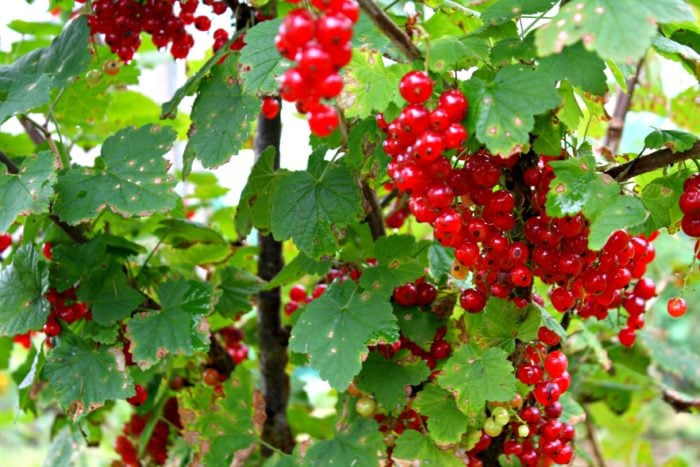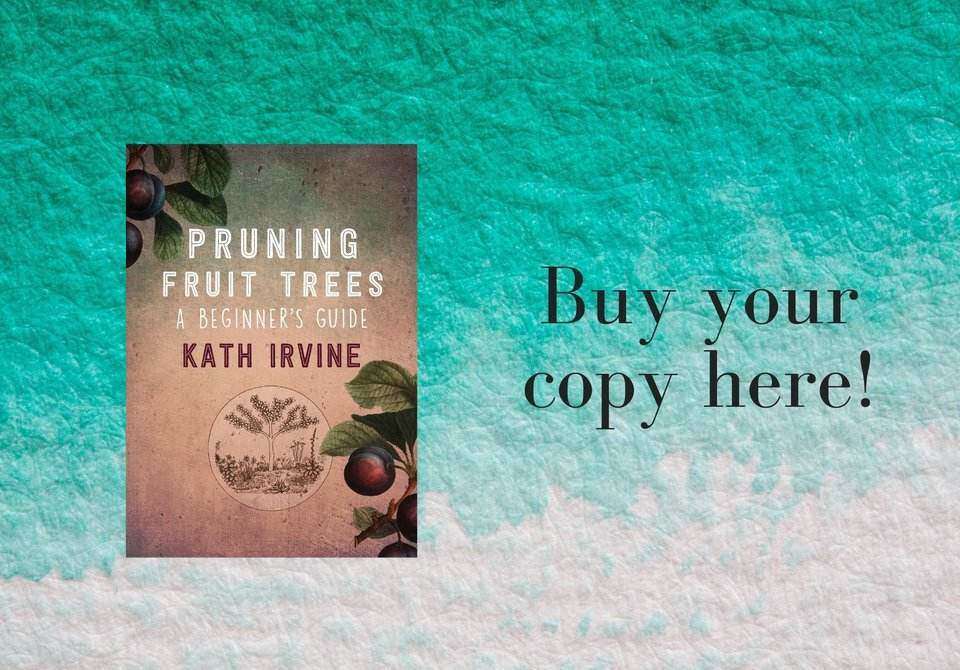How To Prune Redcurrants And Blackcurrants


Pruning currants makes the wickedest difference to the amount and quality of fruit because the fruits come on young wood. Left unpruned, the harvests become increasingly pathetic - too much old unproductive wood! An annual winter prune and a spring feed will inspire the new wood to come through, netting yourself a haul of about 5kg of delicious fruit per shrub. Yum!
There is a small difference in the way each currant fruits, making for a small difference in the way we prune them.
- Blackcurrants bear a small amount of fruit on one year old wood, bearing most of it on two year old wood.
- Redcurrants (Gooseberries too), never bear fruit on one year old wood. Fruit comes on the two and three year old wood.
If the thought of one, two, three year old wood has you worried - don't be - the difference is obvious when you know what you're looking for.
- One year old wood is smooth, thin and light coloured. It looks fresh - like a one year old!
- Two and three year old wood stands out from the one year old wood because every year the wood gets thicker, grows more shoots and gets darker. It looses its smooth texture and becomes mottled. You will also see the little laterals where the currants grew the year before - maybe even a few shrivelled fruits hanging from them.
Your job as the pruner is to set up a three year cycle. Leaving the shoot that grows in the first year to fatten and develop into two year old wood (blackcurrant) or three year old wood (redcurrant). At which point it's best years are over - it's time to remove it and inspire a new one.
Don't be too anxious here, and over think it. Just do it! - you'll learn. I once pruned a horribly overgrown blackcurrant with my chainsaw, at the base - and began again!
Pruning Goals
- To prune out the old, in order to stimulate the new.
- To prune out the damaged and dead to prevent disease
- To prune out the weak and the clutter for bigger, better fruits.
- To open the bushes up to light for ripening and airflow for health.
For both Red and Black
- Prune out the short, spindly, dead or damaged wood - as close to the base of the currant as practical.
- Prune out wood in the centre - for light and airflow.
- Prune out branches growing low to ground.
- Prune away any crossing shoots or branches.
- Prune out the clutter using thinning cuts (the removal of shoots or branches at their point of origin), to keep the currant open.
- Always cut away to an outward facing bud.
A few small differences
For Blackcurrants
- Prune out old wood rigorously, as close to ground level as possible. Until you get used to how the old wood looks, it may be easier to prune branches out immediately after harvest in summer. Remove the branches with the heavy crops (2 year olds), and leave the branches with light crops (one year olds).
- Don't head back (shorten) anything on a blackcurrant, unless one branch is racing ahead of the others. In which case head it back to a similar length to create a balanced shrub. Always cut to an outward facing bud.
- Blackcurrants receive a harder prune than redcurrants - overall removing about a third of the bush.

For Redcurrants
Prune out a selection of the oldest wood, as close to the base as possible. If lots of new shoots are coming off the older wood, you have options. (Those new shoots will be fruitful next summer.)
Either head back the older branch to an outward growing new shoot or leave the branch in place for another year and trim back all the shoots by a thirdor if it's cluttering up the shrub remove it at the base.
Any of these options will be fine - just do the one that feels/ looks right.
Head back (shorten) all branches and shoots by about a third, cutting to an outward facing bud. This stimulates the fruiting spurs - for more vigour in summer.
What You Leave Behind
As much as pruning is about removing - it's about leaving behind as well. Be sure to leave 8 - 12 well spaced, youngish branches (on a mature shrub) for a decent harvest.
Don't be shy!
Don't be a shy pruner - going around the outside, shortening everything. When you shorten a branch it forks, making for twiggy, dense growth the next season. No light, no air, no new shoots!
Be bold! Get inside the shrub removing whole shoots/ branches at their point of origin. Lots of thinning makes for an open shrub and inspires lovely strong shoots the season following.

